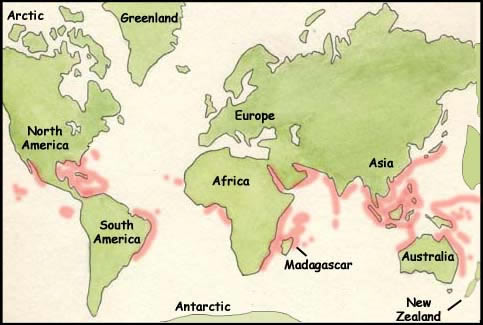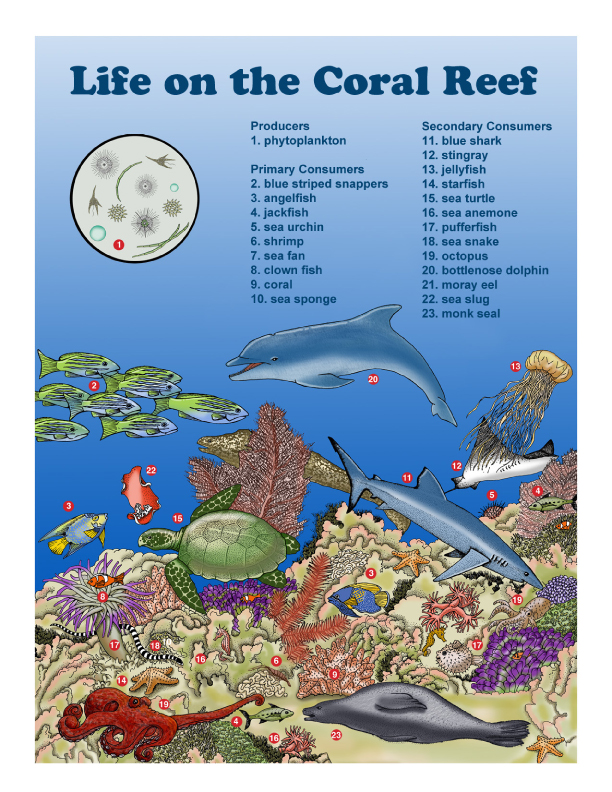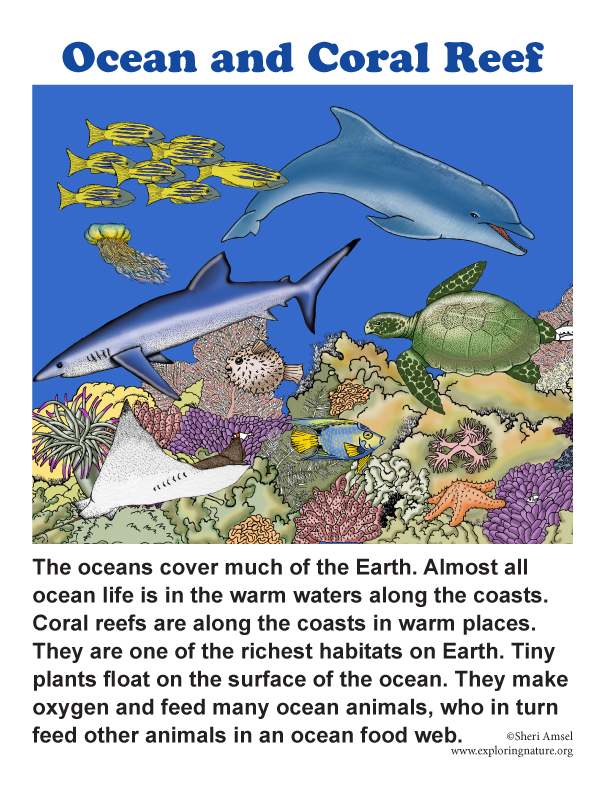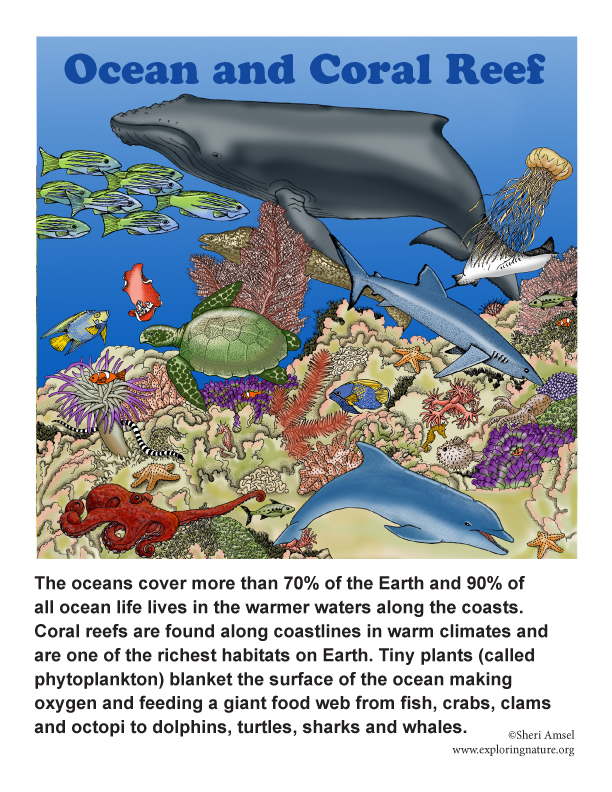

Coral reefs are found along coastlines in warm climates throughout the worlds oceans.
A coral reef is a habitat that has many different kinds of animals and plants in it. This is called diversity. It is also a habitat that is completely under water! The water must be salty and between 68° and 82° F. Coral reefs need this constant warm temperature to thrive. They need to be near land because the wave action brings nutrients (food) and oxygen to the life there. It also keeps sand from settling over the animals anchored there. There are 3 kinds of coral reefs.
Fringing reefs run along a shoreline in shallow water, like the reefs around Hawaii or the Caribbean Islands.
Barrier reefs run along continents and around islands further off the coast in the ocean. The largest barrier reef in the world is called the Great Barrier Reef and runs along the coast of Australia. It is 1,200 miles long.
A reef called an atoll forms small islands that surround a lagoon of water. There are many atolls in the Indo-Pacific Ocean.
Coral reefs are in danger. They can be hurt by people collecting pretty corals or just by walking on the delicate plants and animals. Coral reefs are hurt by pollution and over-fishing. If the zooxanthellae alga dies from pollution or changing water temperatures, the coral loses its pretty colors. This is called coral bleaching and is a sign of an unhealthy coral reef.
The coral itself may look like rock but it is actually animal. Coral is the most common animal found on the coral reef. Coral starts as a small floating polyp that attaches to the reef. Here they stay anchored their whole lives. They cannot chase prey, but have tentacles that sting and capture prey. Their tentacles are also sticky so they can also snag food particles as they float by. Other reef animals include: sea urchins, sponges, sea stars, worms, sea slug, fish, sharks, rays, lobsters, shrimp, octopus, snails, jellyfish, clams, sea turtles, sea anemones, and fish.
Plants on the coral reef are at the bottom of the food chain (just like on land) and are food, make oxygen and shelter the animals living there. They make food using photosynthesis from the sun's energy. Some coral reef plants include: sea grass, algae and plankton. The most important algae on the coral reef is called: zooxanthellae. It lives in the coral tissue itself, feeding the coral food and oxygen and taking up the carbon dioxide. Zooxanthella is what gives coral its many pretty colors.
_____________________________________________________________________________________________________________
Related Information About This Topic:
Coral Reef Food Web
Related Activity:
Coral Reef Coloring Page
Coral Reef Hidden Picture
Related Visual Aid:
Coral Reef Poster
Related Testing and Assessment:
Coral Reef Food Web Activity
Coral Reef Labeling Page
Coral Reef - Multiple Choice Quiz
Coral Reef – Read and React (Long Answer)
Coral Reefs - Read and React (Short Answer)
_____________________________________________________________________________________________________________
When you research information you must cite the reference. Citing for websites is different from citing from books, magazines and periodicals. The style of citing shown here is from the MLA Style Citations (Modern Language Association).
When citing a WEBSITE the general format is as follows.
Author Last Name, First Name(s). "Title: Subtitle of Part of Web Page, if appropriate." Title: Subtitle: Section of Page if appropriate. Sponsoring/Publishing Agency, If Given. Additional significant descriptive information. Date of Electronic Publication or other Date, such as Last Updated. Day Month Year of access < URL >.
Amsel, Sheri. "Coral Reefs" Exploring Nature Educational Resource ©2005-2024. December 13, 2024
< http://www.exploringnature.org/db/view/Coral-Reefs >




